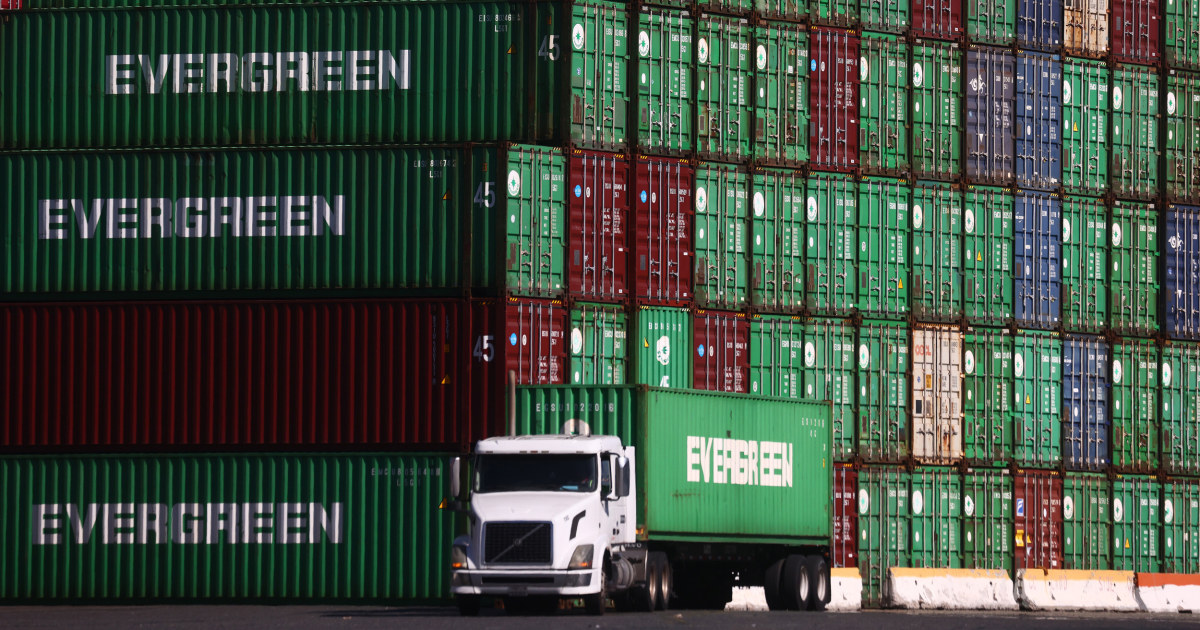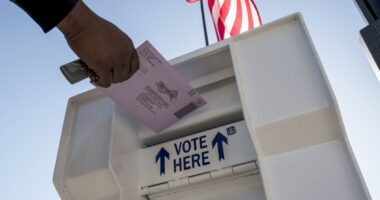
WASHINGTON — Much of the COVID-19 pandemic has been about masks, hospitalizations and vaccinations, but another big part of the story revolves around inflation, worker shortages and empty product shelves. Ultimately, these economic impacts may linger because they are remarkably complicated and defy silver bullet solutions.
Suddenly, logistics and supply chain management — traditionally mundane topics — are becoming important political issues as the nation longs for things to return to “normal.”
How did it all start? Well, you probably had something to do with it — in fact, we all did. As the nation shuddered stores, restaurants and bars 18 months ago, spending habits changed. People went out and traveled less, spent more time on the sofa, inevitably logging time on online shopping sites.
You can see the impact of this in how Americans have been spending their money. The United States has long been, and continues to be, a service-driven economy, but since the onset of the pandemic, Americans have rediscovered the joy of spending money on goods.
Personal spending on services was up by about 4 percent in August of 2021 from August of 2019, the last August before the pandemic began, according to the Bureau of Economic Analysis. That’s not a terrible number considering everything the country and the economy has been through.
But personal spending on goods was up by 20 percent in August of this year compared to August of two years ago, according to BEA. That’s a pretty dramatic spike — about an additional $900 billion spent — that works out to a lot of patio furniture sets, building supplies, electronics and more showing up at American doors.
All of these goods have to come from somewhere, and much of it comes from overseas —particularly Asia. Again, comparing 2021 to 2019, you can see how big a difference that’s made in terms of trade.
The first seven months of 2021 saw a 27 percent increase in cargo from Asia compared to the first seven months of 2019. That would be a big jump in any industry, but in a business such as shipping that relies on manpower and physical items like ships, containers, cranes and ports, it has massive real-world impacts.
In the past 18 months, the cost of shipping containers has skyrocketed as demand has increased, resulting in a shortage of ships to move goods and space at ports. That’s one reason why the ports of Los Angeles and Long Beach had record-breaking numbers of ships lined up waiting to dock at the end of September — with scores of contained ships anchored out in the harbor.
Even when those ships eventually get to dock, there is still the issue of getting their merchandise off the ships and into stores or distribution centers. That process often requires trucks and — comparing the numbers from 2019 to 2021 — problems exist in that part of the supply chain as well.
Comparing September of 2021 to September of 2019, the Bureau of Labor Statistics finds there are about 22,000 fewer people working in truck transportation now than there were pre-pandemic. That may not sound like a lot, but remember — the reduction is coming as there is a big increase in goods being shipped.
Even adding those 22,000 people back into the industry probably wouldn’t cover what is needed overall. Some driver recruiting firms report there is one qualified truck driver for every nine job listings, according to Forbes.
Essentially, this big increase in orders for goods has led to many more tons of cargo trying to make their way out of crowded ports both overseas and into the United States. And once the products actually arrive here and are unloaded, there are not enough trucks to move everything.
One net effect: things are moving much more slowly.
Comparing September of 2021 to September of 2019, the firm Freightos found that the average amount of time it takes a product to come from China to its final destination in the U.S. via ocean has climbed by 83 percent, from 40 days in 2019 to 73 days this year.
In short, the changing consumer habits that have come with COVID-19 have led to a supply chain system full of choke points and increased costs all the way through, from workers to cargo containers to shipping space to truck drivers. And all of that is making some products scarcer and cost more.
All of this matters on the political front in the U.S. because those shortages and increased prices have voters on edge.
What voters want sounds simple enough: a return to normal. But when you step back and look at the problem, “simple” is not the word that comes to mind, “normal” feels like a long way off and 2022 is approaching fast.
Source: | This article originally belongs to Nbcnews.com








